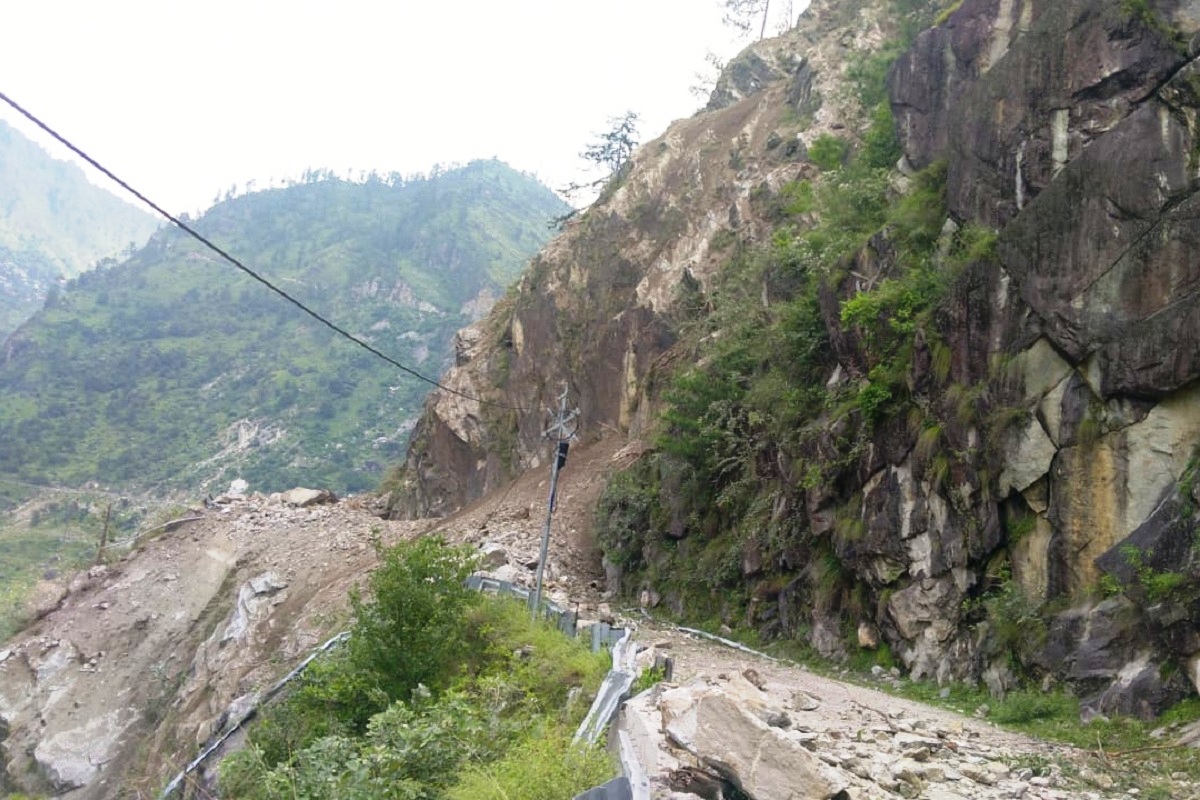Himachal minister approaches speaker invoking anti-defection law against 3 MLAs
The three MLAs' petition is pending in the high court against the Speaker for not approving their resignation from the State Legislative Assembly.
The special PESA law further strengthened this protection by giving them and gram sabhas a big say in decisions concerning their land and people.

(Image: Twitter/@ITBP_official)
Recently the quiet Sangla Valley suddenly came in the limelight when granite boulders fell with great fury on the bridge of a small river and killed the tourists travelling on it.
More generally, however, this as well as the greater part of Kinnaur district of Himachal Pradesh have been regarded as a good example of a region where people live in the proverbial lap of nature, a region which needs protective policies – protection of nature as well as livelihoods of villagers that have been traditionally in harmony with nature.
Protection of animals and birds and river-life is also best achieved in conditions of harmony between people and nature. The beautiful Sutlej river flows across much of this district. A recent study of air quality found the air here to be purest among all the parts of India surveyed.
Advertisement
However there are increasing doubts whether aspects like exceptional purity of air or beauty of river are adequately valued today. The river and forests are not just beautiful, they are almost extremely useful for villagers. A crucial question before such a region is – will the development path adopted by such a region protect its very special virtues and strengths, or will it disrupt them?
Those in charge of important decisions regarding such a region need to be extra sensitive to these concerns, particularly as many villagers already feel disturbed that these aspects are being neglected. Will the authorities learn to be more careful and sensitive before it is too late? Let us first recognize that within this lap of nature there can also be serious risks and hazards, as was emphasised in the recent cruel landslide near Sangla which killed nine tourists.
The geologists who visited the landslide site subsequently are reported to have stated in their initial comments that the bare hills which witnessed the disastrous landslide badly need vegetation to help in stabilising the granite stones.
The majestic hills of Kinnaur create a false picture of strength which can be very deceptive as the ecologically young hills exhibit frequent signs of instability and fragility which needs stabilisation (among other ways by more vegetation and greenery) but what has taken place instead is a huge construction boom of hydro projects involving loss of trees and vegetation as well as blasting work which further weakens fragile hill stability and starts several new landslides while aggravating existing prone areas.
Many activists and villagers of Kinnaur and neighboring areas have said in their protests that the spate of hydro projects, whether under construction, planned or proposed on the Sutlej, by some estimates stated to be over 100, are quite beyond the carrying capacity of the river and the region, and will ruin the beautiful river by converting it into a long series of tunnels and reservoirs.
It is stated that the tunnel of the 804 MW Jungi Thopan Powari hydro project will be 12 km long. The concerns of people are justified, but the companies which are sent in here as developers do not frequently understand what people say; they only understand what can be measured in rupees and MWs. So, there is a growing gap between what people say and what powerful companies do. Someone has to bridge this gap before it is too late.
There are beautiful farms where for centuries entire families have worked and harvested, singing folk songs. Water springs have also flowed down the hills bringing clean pure water for drinking and irrigating fields and orchards. But now big tunnels are being constructed, diverting water and ruining springs with their debris and explosions.
Trees are being cut and what is taken up in the compensatory replanting efforts is poorly planned and implemented. Even the much-cherished chilgoza tree, known for its highly nutritious edible seeds, is increasingly threatened. Tribal communities have lived in peace here for centuries. The Constitution of India respected their way of life by creating special scheduled areas providing scope for protecting tribal community life.
The special PESA law further strengthened this protection by giving them and gram sabhas a big say in decisions concerning their land and people. But unfortunately when the big companies come they do whatever they want without restrictions and these various protective provisions are forgotten, or avoided using various dubious tricks.
The powerful always have their way, but when the weak feel cheated time and again, this is not good for democracy, and one hopes that the authorities realise this before it is too late. This region needs peace and protection, based on a much bigger and empowering role for rural communities. Let them have the main say in what peace and protection-based development of their land requires, and the rest will work itself out.
But if the authorities continue to persist with their present policy of imposing what they want on peaceful people, then the results will be disruptive for people as well as for the environment. Inflicting ecologically ruinous path on the region and the river will adversely affect a much wider region beyond Kinnaur and its immediate neighborhood. Clearly the government should opt for a development path based on protection and peace, not disruption and destruction.
(The writer is Honorary Convener, Campaign to Protect Earth Now. His recent books include Man Over Machine (Gandhian Ideas for Our Times) and Protecting Earth for Children)
Advertisement